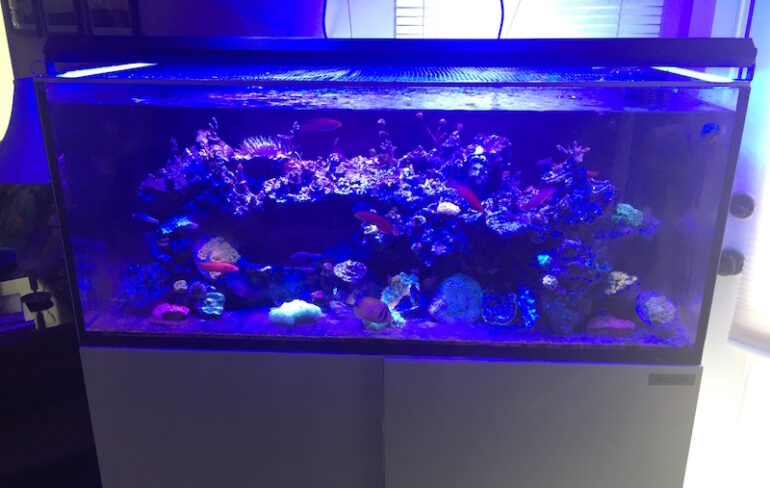Sometimes we just aren’t as smart as we think we are. I am using the “royal we” as I know I am definitely not as smart as I think I am a lot of the tie, especially when it comes to this hobby. Having science degrees and having had the scientific method beat into me, you would think I would know better than to manipulate multiple variables at the same time.

While I was not attempting to test a scientific hypothesis, I was hoping to come up with a new, “better,” easier methodology for setting up and maintaining a tank. For those of you that read this column regularly will remember in the winter of 2016 I switched over my 90-gallon tank for a new, better-looking and up to date Elos 120-gallon tank and I set it us with the notion that I would use a lot of new equipment and a methodology that I had not used before.
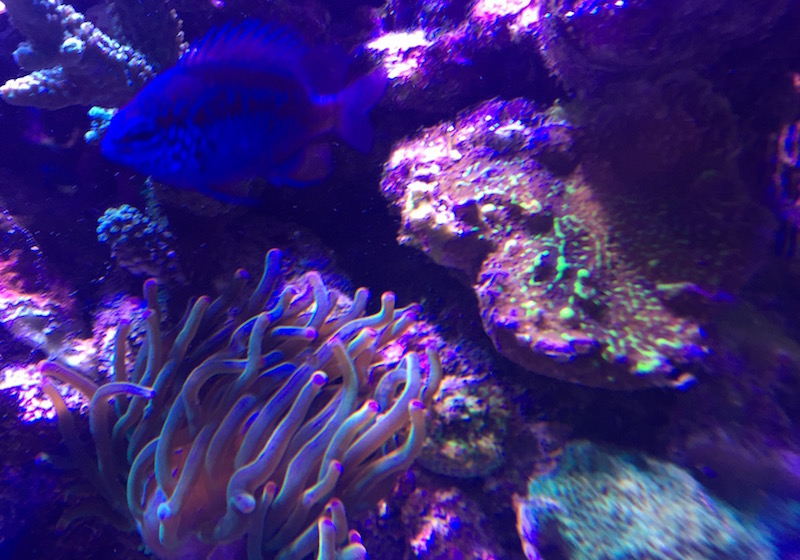
As I said, I should have known better as I now realize that I changed too much and tried to use concepts and methodologies that I had only used to a small degree or that I had not tried at all. So, for lack of a better term, for the first year after the tank was set up I consider it a failure. I will explain the how’s and why’s and hopefully some of the things we all might avoid when we set up a tank below.
So what did I do differently when I started this new tank. To begin with, the new tank started with only “dead” live rock, none of the old live rock from the old tank or any “live rock” for that matter was used. The only thing I did with his dead rock was to soak it in water from a water changes from my 300 for 6 weeks to try and inoculate it and make it a little live.
This tank also started with a new protein skimmer with a new design, new uniquely designed media reactors as well as lights that I had not used before, with the lights being custom made. The tank had only moderate water movement, and it contained no Miracle Mud, or substrate of any kind, and the bottom was covered with Starboard. The sump contained both a Chaeto and Caulerpa , that were contained in separate sections of the sump.

Even the salt that was used was different from what I normally used, as this was done so as to follow the guidelines of one of the most unique aspects of this set up in that the tank would be run using the Triton method and thus would not have any water changes done on it and the water would be tested regularly.
In theory, all of these changes in methodologies as well as the new equipment being used on the tank should not have caused problems, and should have provided at least a comparable if not superior result to what I had done in the past, at least that is how I saw it. I set this tank up as an experiment to test not only the Triton method, but also to try out a bunch of new equipment.
So having it fail, which I will explain why it did, in detail below, was incredibly disappointing. It was disappointing on a number of levels. First, the tank itself, as are all Elos tanks, is beautiful and it sits between the kitchen and the family room, so it is the one tank in the house that everyone sees from the moment they walk in the front door.
So because of where it sits, it has been a constant reminder of what I did wrong. It was also disappointing, as even once it failed, that it took me so long to figure out why and to correct the problem. And lastly it was disappointing in that I did not even follow my own advice in a number of different ways.

So after reading the above you are asking yourself “so how did this tank fail or what does Mike consider a failure?” And more importantly “why did this tank fail and what did he do to correct it”. My definition of failure is quite simple: corals did not live in this tank for any length of time once they were placed in the tank, which I would think most of us would consider a failure. So what happened and why.
Once the tank was set up, with all of the “dead” live rock in place after it had been cured and all of the equipment was tested and was functioning properly, the tank was allowed to run for approximately 6 weeks with no intervention other than top off water being added daily via an ATO to make up for evaporation, and bacteria cultures were added as well.
After this break-in period, some snails and a couple of frags of hardy Acropora and Montipora were placed in the tank and mounted in what were considered optimal positions. Several coral frags were taken from the same mother colonies and mounted at different heights in the tank to reduce the likelihood that bleaching from the new lights to reduce the likelihood of one factor affecting them all.
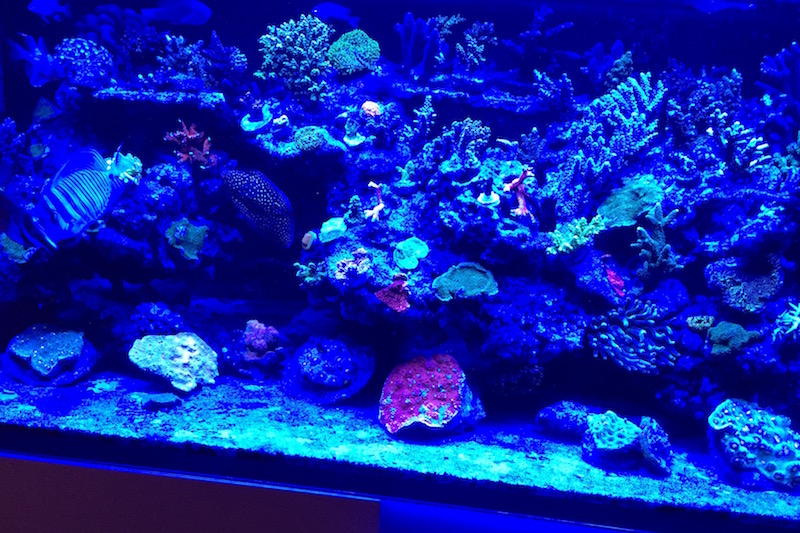
At this point, a water sample was sent to Triton, which came back showing all parameters were within their limits, as expected. After a full week, all of the corals looked good, so more frags were added to the tank. In addition, a couple of herbivores, including a Rabbitfish and a tang were also added. So at this point everything seemed to be going okay and I was sure the tank would thrive and do well over the long term.
It was at approximately the third week after the initial frags were added that it started to fail.
The initial signs of problems appeared when the initial frags slowly started to fade and then gradually totally bleached and died. This then progressed over the next month to where the majority of frags that were placed in the tank also showed this response. They all just gradually faded and eventually totally bleached out and then died. At this point I sent in another test for Triton and it too came back showing all of the parameters were good.

So then I started manipulating things and changing things in the hope of finding out what the source of this problem was. First it was not the source of the frags, as all of them were either frags of frags I had or frags off of mother colonies all of which were doing great in my other system.
So the next thing that was looked at was the lighting. The light was changed a multitude of ways including adjusting its intensity, adjusting it duration and adjusting its spectrum. Despite varying all of these parameters and taking time to see if any had any affect, all of the subsequent frags placed in the tank perished in the same fashion.
All of this manipulation of the lighting did nothing for the survivability of the corals, but it did produce several different algal blooms. So not only did the corals fail to thrive in this tank, but their death added to the nutrient levels, as a result ugly nuisance algaes sprouted and filled the tank in their place. So the tank was a mess of dead coral and ugly algae.
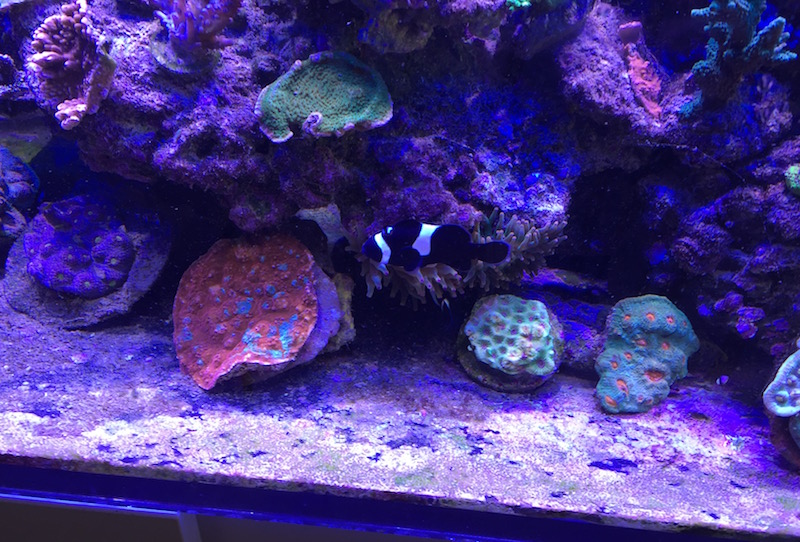
So since obviously light was not the culprit I began changing out things. And due to my not heeding my own advice and my rushing and constantly changing things the tank still had not settled down or become productive after a year in operation. Despite switching to my trusted Radion and ReefBrite LED lights, a Vertex skimmer and media reactor and adding two Radion Vortech pumps for current, the tank was still a failure in terms of keeping sps corals, which was the main purpose for my setting up the tank in the first place.
However, whatever the problem was, soft corals, anemones and fish all did well in the tank and over 9 months eventually the algae went away. It should be noted that over this time Triton tests were done with regularity and all showed stable and optimal parameters, but I did go back to doing regular water changes and added Miracle Mud as I had in all of my tanks, thinking that not doing changes or using Miracle Mud might have been the culprit, but it wasn’t. So a year after being set up, the reason for the continued failure was still a mystery and any sps corals that were added still failed to thrive or even encrust, however it now took about 6 weeks or longer for them to show this pattern of demise.

At this point, I was deciding whether the tank should be broken down and started completely over from scratch when I made one of my regular visits to see Sanjay. Sanjay had set up a new tank and was looking to do something completely different from the standard sps tank, as he wanted it to house only Montiporas and he was going to house a variety of Butterflyfish as the main fish inhabitants. When he started the tank I had given him some Montipora frags and he had moved a bunch of Montipora frags from his own tanks into it, so I was anxious to see how it was going.
At first glance the tank looked okay as the Butterflies looked healthy and were eating and the Montipora frags looked okay. But when I asked him how it was going he said fish wise it was great, but the frags all seemed to follow the same pattern: they were fine for a week or two and then they would gradually fade and then perish. And despite where he got the frags from or how healthy they were they did the same thing as was happening in my tank.
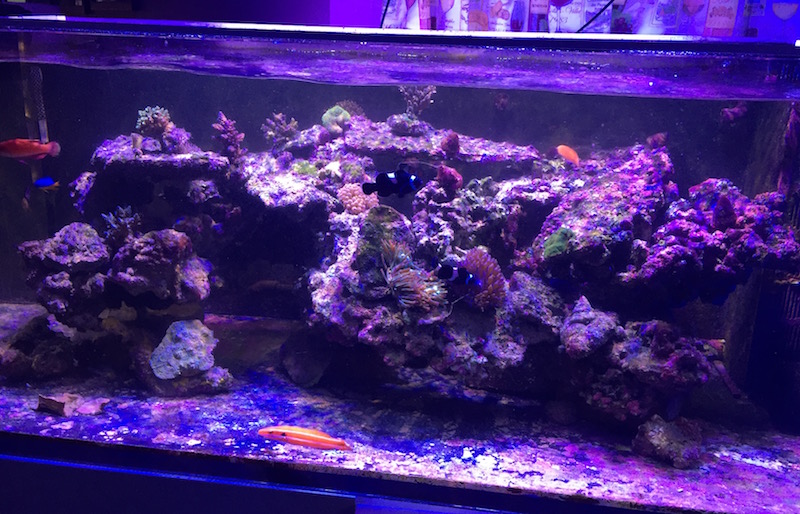
I then told him I was having the same problem and was at my wits end to figure out what was causing it. We then tried to figure out what commonalties the tanks shared that could be causing them to have the same problem and why they were failing. After a short discussion, we came to realize that the one and really only thing that they shared and that we had done differently than we had done in the past that might be causing it was that we both started them off with exclusively “dead” live rock.
And while I tried to cure mine in tank water and added bacterial cultures to the tank it did not seem to make much of a difference in terms of how the corals fared in it. When I got home I contacted some of my friends who I knew had also recently set up new tanks, especially the ones who started with dead rock. Most had started with at least a 50/50 split of dead rock and live rock and did not report any problems. But for those individuals who had done dead rock exclusively, reported similar problems to what Sanjay and I had encountered.
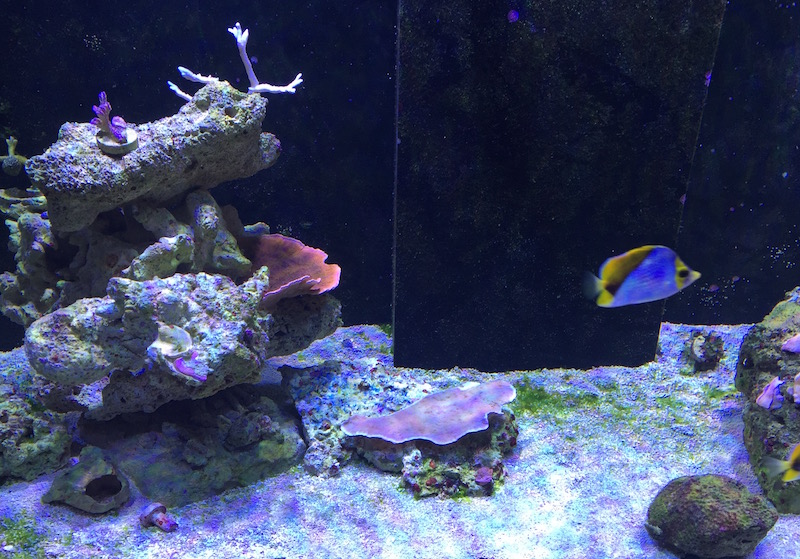
Their sps corals had also initially failed to thrive and only when they gave their tanks lots of time, at least over a year and had either added more live rock or bacterial cultures did their sps corals start to thrive. Some of my European friends had even come up with the theory that dead rock did not work as it did not contain either the varied bacteria, sponges, microalgae nor natural fauna and flora that true live rock did and as a result these elements were lacking for sps corals and hence why they failed.
Since I respected the people who made these suggestions I finally bit the bullet and made the changes they suggested and took my time doing it. Forty pounds of fresh live rock was obtained and it was cured for three months with weekly water changes, current in the tank and even its own protein skimmer.
When it was ready, the water that contained it showed no traces of nutrients or ammonia or nitrite so I thought it was clean enough to be used to switch out with some of the dead rock I used. Over a month, ten pounds of it per week was switched out with the dead rock in the tank. During this time, some live rock from my other tanks was also added and this rock was chosen as it was full of sponges. It has been my experience that in tanks where sponges thrive corals also tend to do better.
So since the dead rock contained no sponges I thought by adding them the likelihood of the corals doing better was increased. I closely monitored the tank’s parameters and kept an eye on how the soft corals. anemones and fish were doing during this “break-in phase. After a month when all seemed stable with no problems, I again added a couple of frags from various corals and held my breath as I waited to see if they would slowly fade as had been the case with all of the previous corals.
As luck would have it, I had to travel for the second week they were in the tank, so upon my return I expected the worst and that they would be faded like the rest and I would have to go back to the drawing board. However, this was not the case as all of the corals had survived and if anything looked to be healthy and did not have any of the paling that I have come to associate with a sick coral.
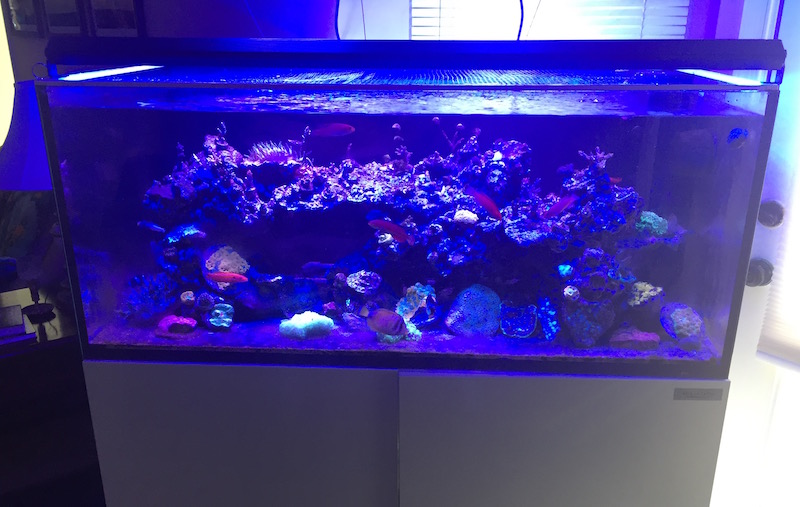
Unlike what I had done in the past, I then did something rare for me: I did nothing, and changed nothing. I decided that I would give them even more time to see how they did over time since I had been fooled in the past, and would not add any other frags until I knew for sure that they would survive. Over the next two weeks, they not only survived, but they did something that for the most part I had taken for granted over the past ten years, they started to encrust on the rocks to which they had been attached.
This to me was finally a good moment for this tank as to my mind I had solved what caused this tank to fail so miserably over the first year plus of its existence, and even better I now had a new tank in which to put all of the frags I had collected and been storing in the frag tank for the past year. And let’s be honest, it also meant I now had more room in both tanks to get even more new corals.
So the good news from all of this is that I learned several lessons in my still steep learning curve of reefkeeping: go slow, change only one variable at a time, and talk with people you trust when you can’t solve a problem. Obviously looking back, I wish I had not tried to use so many new things at once on this new tank so I could have deciphered the problem faster, and I will not do so when I set up new tanks in the future. I really wish I had been able to give the Triton method with no water changes a better test, but I will continue to use it to monitor the overall parameters for both macro and trace elements in my tank as from my perspective it is still the best way to monitor these aspects of a tank.
And while I’m sure some of you have had good success using dead rock to fill your tanks, at least for me it did not work or I did not give it enough time to be fully inoculated and full of the necessary bacteria and fauna to be as good as true live rock. At the moment the tank is progressing nicely as the coral frags are starting to encrust and take off and the small colonies I added are filling enough space that the tank already looks semi full. After going through all of the problems I have had with this tank for the last 18 months I am going to try something that I rarely do and have never done in the past.
By the end of the month I am going to have all the frags and fish I want in place in this tank, so then I am going to follow what I learned from the articles I did on the masters and I am just going to keep the tank stable and not add anything. Hopefully as a result, over time it will resemble their tanks in terms of color and health and it will provide the dramatic focal point for my home that I have been looking for.


